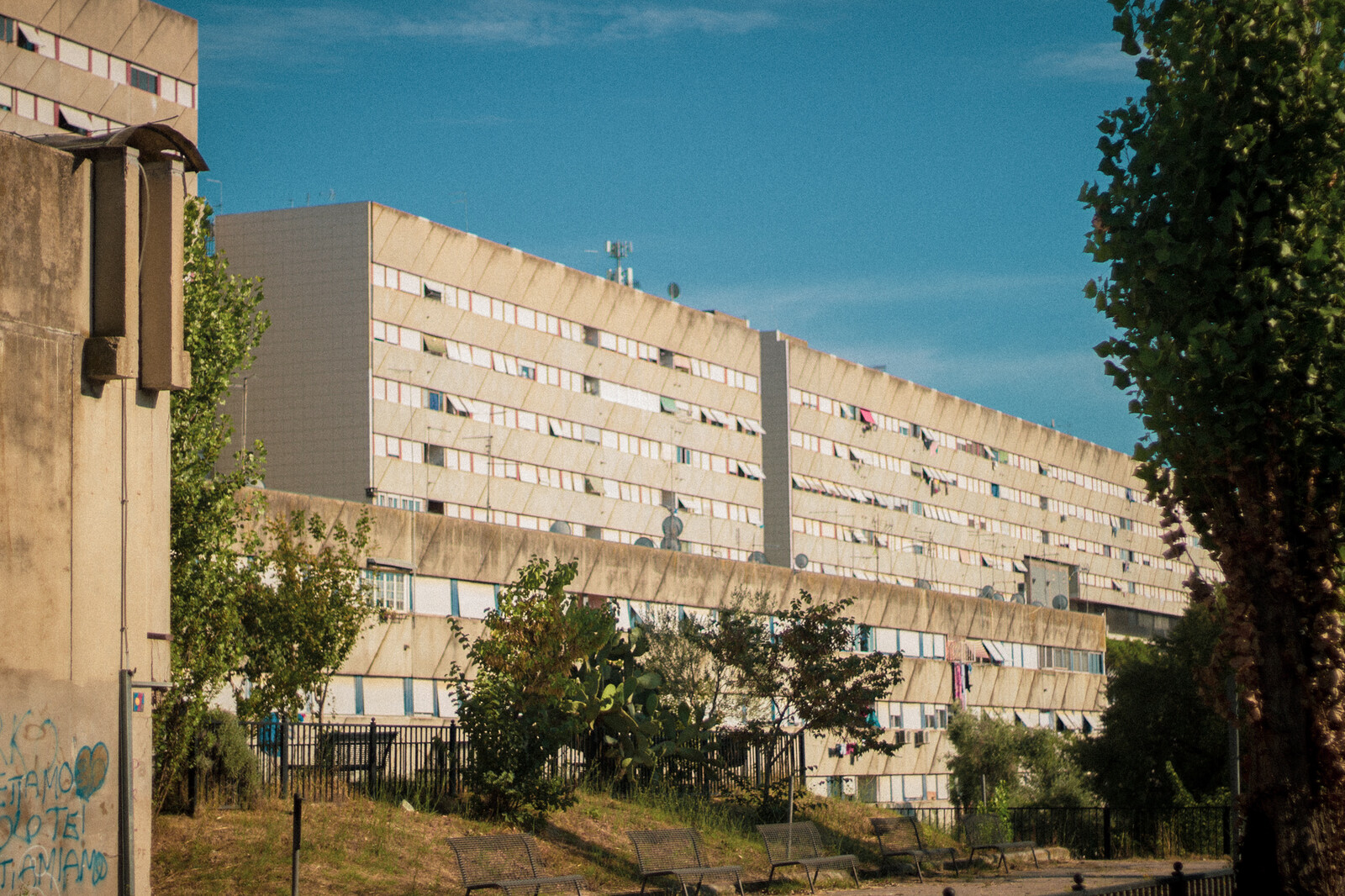Framing Renovation is a collaboration between e-flux Architecture and the Faculty of Architecture of the University of Ljubljana within the context of the 2023–24 LINA Architecture Program, featuring contributions by Merve Bedir; Ana Dana Beroš and Mika Savela; Arno Brandlhuber, Ludwig Engel, Olaf Grawert, and Alina Kolar; Rocío Calzado; Future Foodscapes Research Unit; Nicole Kalms; Mo Michelsen Stochholm Krag; Alessandro Petti and Sandi Hilal; Robida Collective; and Katrina Wiberg.
The extent to which the field of architecture is imbricated in and contributes to the ongoing process of climate breakdown is cause for pause and deep reflection. Nearly 40% of all greenhouse gas emissions come from what the UN refers to as the built environment sector.1 New building activity accounts for a share of that, but maintaining buildings that were designed in the past is a significant contributor. While architects only design a fragment of all buildings, architecture has long seen itself as a pioneer, one whose actions have the potential to ripple out far beyond its disciplinary bounds. Architectural practice is subject to an intricate set of constraints, but it always maintains a degree of autonomy from them. This allows architects to interpret and compose the constraints and conditions of architectural practice in innovative ways, and, in so doing, to respond to contemporary urgencies and sensibilities and to demonstrate that things can be done otherwise.
For hundreds of years, particularly outside of dense, historical, urban centers, whenever new spatial demands have arisen—and they always do—the typical response of the building industry has been to build new buildings. This has been fueled largely by economic motives: sub-urban land is regularly cheaper, transport infrastructures ease the movement of both people and materials, and building processes can generally be more efficient (and designed to scale) when building new. Beyond leading to the dramatic expansion of the geographic footprint of human settlement, this has produced a variegated yet omnipresent landscape of architectural emptiness and abandonment. At the same time, while the cultural affordances of urban centers can outweigh the heightened costs of building in the city, urban buildings are still often bought with the primary intention of being torn down, all so that something new can be built.
Building anew is predicated on an act of erasure, one that flattens complexity and commodifies the value of the built environment. Beyond this, it is an enormous expenditure and waste of carbon. Another approach is to consider what already exists and to work with it—not against it, or even in spite of it—to better serve contemporary exigencies. Until there is a paradigm shift not just in the field of architecture, but in society and in the building industry as a whole, renovation will perhaps always be slower, more expensive, and more difficult than building new. But renovation dramatically reduces the climate impact of a project, and has more meaningful and transformative potential. Indeed, there are numerous case studies from the past decades of exemplary (as well as disappointing) architectural renovation projects, not to mention countless examples from throughout history. Renovation is arguably as old—if not older—than architecture itself. In fact, most buildings we have ever known, or have been in, have been renovated at one point or another. Renovation is a basic process of adapting space to accommodate new ways of living, of working, of socializing, and of being together.
Distinct from the emerging specialization of adaptive reuse, renovation encompasses a diverse set of practices and processes that depart from embodied and situated forms of knowledge. Renovation is therefore generally more accessible and immediate than an architectural project. It should be understood more as an approach to the built environment than a specific practice with a predetermined set of skills, tools, materials, and methods. Every process of renovation must be tailored to the particularities of what is being renovated, and is ultimately determined by what is at stake in undertaking such a process of transformation. In this sense, we might equally renovate a building as we might an object, a community, an industry, a village, a relationship, a landscape, a memory, or an ecosystem.
Any process of renovation is forced to reckon and engage with the history, the context, and the stories of a place. As such, renovation ultimately has the potential to transcend the material and operate metaphysically, through meaning, purpose, and identity. While demolition and new construction pushes the past into the realm of oblivion, renovation not only acknowledges the value and weight of what came before, but also has the potential to change it. Renovation can therefore be a dignified means of reconciliation, reparation, and justice. Renovation, today, is an obligation.2 Currently, it realizes itself in a variety of forms that break with past practices and present new actualities. Hence, there is a need to delineate and terminologically capture the economical, architectural, and social practices behind it. We need to reframe what renovation can be, and what it can do.
United Nations Environment Programme and Yale Center for Ecosystems + Architecture, Building Materials and the Climate: Constructing a New Future (United Nations Environment Programme, September 2023). See ➝.
In some places, like in Flanders, this obligation has become codified into law for climate-related purposes. “Renovatieverplichting voor nieuwe eigenaars,” Digital Flanders, ➝.
Framing Renovation is a collaboration between e-flux Architecture and the Faculty of Architecture of the University of Ljubljana within the context of the 2023–24 LINA Architecture Program.










